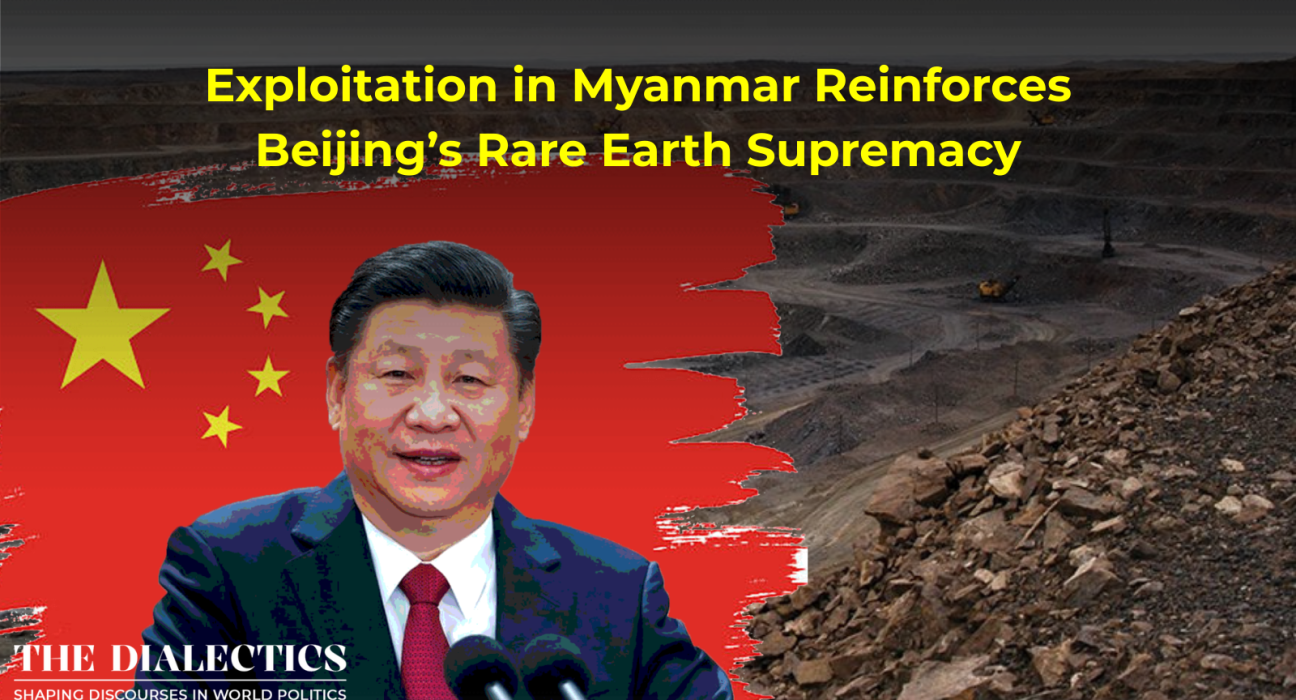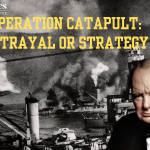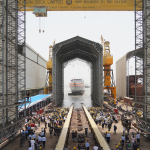In May 2025, China issued a stark ultimatum to the Kachin Independence Army (KIA), threatening to halt rare earth purchases unless stability returned to Myanmar’s Bhamo region. The warning followed an escalation in conflict that disrupted the supply of heavy rare earth elements, cutting shipments to China by half. It was a notable act of open diplomatic pressure, highlighting the strategic significance of the minerals involved. Over the past decade, rare earths have evolved from niche industrial inputs into geopolitical assets, and in this complex arena, Myanmar now occupies a critical position.
Not Extraction but Exploitation
China leads the global rare earth industry, accounting for roughly 70% of total production and nearly 90% of the world’s refining capabilities. Yet it remains strategically vulnerable, being dependent on external sources for key heavy rare earths such as dysprosium and terbium, which are essential to electric vehicles, defense technologies, and renewable energy systems. From 2017 to 2024, Myanmar exported rare earth minerals valued at over USD 4 billion to China. Notably, USD 3.6 billion of this trade took place after Myanmar’s 2021 military coup, suggesting that political upheaval has not deterred extraction but has instead coincided with its acceleration.
Much of it originates from conflict-affected Kachin State and neighboring Shan State, home to some of the world’s richest heavy rare earth reserves. In 2023, Kachin alone produced close to 42,000 metric tonnes of these elements, more than double its 2021 output. The extraction of these materials is driven by crude and environmentally destructive methods. Much of it relies on ion-adsorption clay techniques, leaving behind a toxic footprint. Satellite imagery has revealed more than 2,700 chemical leaching pools spread across 300 sites, covering an area roughly the size of Singapore. These operations are largely informal, with little oversight and severe consequences. Toxic chemicals like oxalic acid are reportedly dumped directly into rivers and streams, causing respiratory and skin ailments among local workers.
Control over Myanmar’s rare earth zones is fragmented and heavily militarized. In northern Kachin, the KIA oversees several key mining belts and imposes a 20 percent tax on extracted volumes. In addition, exporters are charged as much as ¥35,000 or roughly USD 4,830 per tonne. In Shan State, the United Wa State Army (UWSA), a powerful militia with close ties to China, protects major operations around Mong Hsat and Mong Yun. The NDA-K militia, formerly aligned with Myanmar’s military, operated several mining sites near Panwa and Chipwi before it was displaced. Armed groups channel revenues from such operations into military campaigns, further entrenching their power and deepening instability in the region.
Who takes away Myanmar’s export revenue?
Chinese companies occupy a central position within this ecosystem. In late 2021, China consolidated three major state-owned rare earth companies, to form the China Rare Earth Group (CREG). China Southern Rare Earth Group was the most dominant player, sourcing 70 percent of its raw materials from Myanmar and the remaining 30 percent from recycling, according to Chinese customs officials. These companies often operate through intermediaries and deploy Chinese-speaking managers and equipment on-site. The economic rationale is clear. Mining costs in Myanmar are estimated to be one-seventh of those in China, primarily due to less stringent regulations and an abundant supply of labor. In just the first five months of 2025, Myanmar exported close to 13,000 tonnes of rare earth oxides to China. In 2024, this figure was over 44,000 tonnes, comprising 34 percent of China’s total rare earth imports. While this trade has brought cash into Myanmar’s borderlands, the bulk of profits accrue to foreign firms and armed actors, not local communities.
China’s diplomatic posture in Myanmar reflects a broader pattern of transactional engagement, where access to resources takes precedence over political alignment. Its push to restart rare earth exports is part of a broader strategy seen across other resource frontiers. Rare earth flows shape how it manages relationships not only with militias but also with the central military regime in Myanmar. Its involvement thus reinforces fragmented governance and entrenches armed actors, all while ensuring a steady stream of critical inputs for its industries.
Beyond Myanmar
Beyond Myanmar, China’s rare earth strategy extends across Asia and Africa. Chinese firms have shown significant interest in Vietnam’s Dong Pao rare earth mine, located in Lai Châu province and considered one of the country’s largest reserves. This site has also attracted Australian and Korean companies. In Africa, China invested approximately USD 10 billion in mining projects during just the first half of 2023, targeting resources like lithium, cobalt, copper, and rare earths. In Tanzania, Shenghe Resources acquired a 50 percent stake in the Ngualla rare earth project for USD 63 million. In Zimbabwe and the Democratic Republic of Congo, Chinese companies back large-scale lithium and cobalt operations, often linked to broader Belt and Road infrastructure investments.
Rivals are no match to China
While China integrates upstream extraction with downstream processing, rival efforts by the United States, Australia, and Canada struggle to match its speed and efficiency. For instance, the U.S. has introduced a price support scheme offering USD 110 per kilogram for NdPr magnets at MP Materials’ Texas plant. India has shown interest in Myanmar’s reserves and has dispatched delegations from IREL, yet lacks sufficient refining infrastructure to capitalize on these links. Western efforts are often constrained by environmental standards, higher operational costs, and longer project development timelines.
As China strengthens control over global rare earth supply chains, the strategic impact is significant. These minerals are vital for defense, clean energy, and tech. China’s dominance in refining and sourcing gives it major geopolitical leverage.
Addressing this requires coordinated efforts balancing economic growth, environmental protection, and political stability. Countries aiming to cut reliance on China must invest in extraction and refining, support responsible sourcing frameworks, and work diplomatically with producer nations. They must also ensure that resource exploitation does not exacerbate conflict or undermine local governance. Otherwise, the rush for critical minerals could replicate the same patterns of environmental harm and political fragmentation now visible in Myanmar.
Ultimately, rare earths are no longer just strategic materials, they are geopolitical tools that can shape alliances, influence conflicts, and determine technological competitiveness. Myanmar’s case illustrates the risks of unregulated extraction and the global stakes involved. As clean energy transitions accelerate and digital infrastructure expands, the scramble for these minerals will intensify. Whether this race leads to cooperation or coercion depends on how the world responds today.




